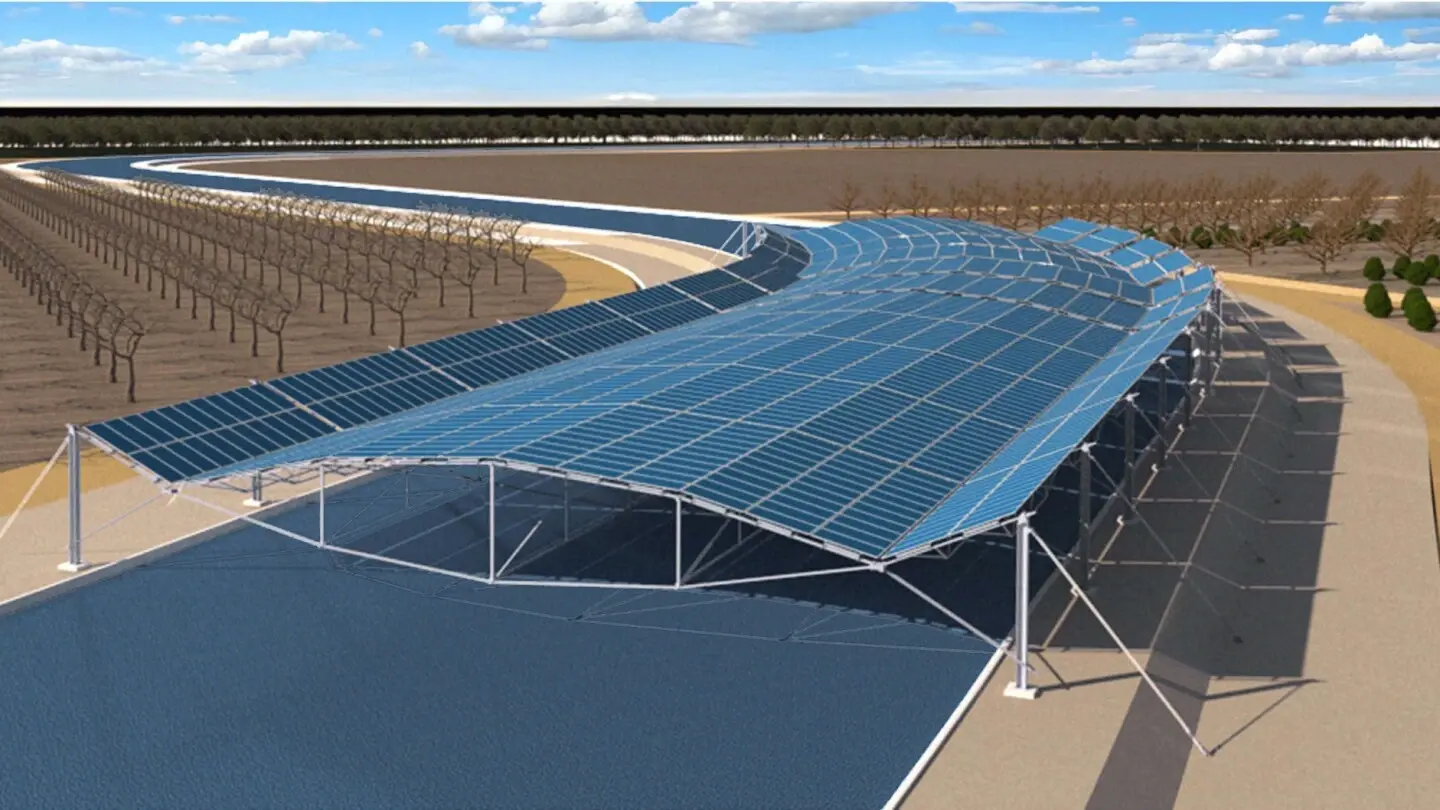- cross-posted to:
- energy@slrpnk.net
- cross-posted to:
- energy@slrpnk.net
Having solar panels spread in long lines over extended distances has some big issues in regards to transmission of that power, that power needs to get put on lines to be sent to where it is actually going to be used, the power that the panels are producing is not suited for long distance transmission and thus need to be transformed in to power that looses less energy when transmitted long distances.
If you’ve got a bunch of panels spread out in a long line, then you’re going to need more stations per panel than if you were to have big clusters of panels. Since the panels need to be with in a certain distance of a station to not have significant transmission losses.
I appreciate the sentiment but we might as well just put normal covers on the canals and build giant solar panel clusters closer to where the power is needed. It’s just a matter of will and the public coughing up the money to do this stuff, not a mater of there not being a clever enough solution.
Are least in California, we have better ways of deploying solar that’s more economical. The issue of storage and transmission is a much bigger problem than generation.
We actually have too much solar sometimes. It’s quite counter intuitive. The grid is a fickle beast.
Not terribly counterintuitive, this has been a widely known issue with intermittent power sources since forever. They’re often feast or famine power sources when the grid needs reliable, and power draw increases when people go home from work, which coincides with the time of day that solar output decreases. Generation is still a problem if we want to ramp up to it covering a majority of the grid, but you’re right that storage is the more immediate problem
The petrol and coal lobbies are why.
One issue is keeping them clean.
In this scenario, you’ve got water and electricity readily available, seems like it would be straightforward to have small pumps and sprinklers. When the output from the panels drops below expected levels, automatically turn on the sprinklers for a bit to rinse them off.
Typically the panels need to be scrubbed every so often, it’s not enough to just sprinkle water on them. While I’m sure this would be feasible, you’ve got an added risk in doing it over water.
did any of you even read that article?
I did, especially the part where they said (my emphasis):
“The capital costs are really high, and maintenance is an issue,” said Jaydip Parmar an engineer in Gujarat who oversees several small solar canal projects.
Granted, these are technical problems that can and should be overcome. However the title of the post and article says “why aren’t they widespread?”, so it seems fitting to discuss these reasons.
The other answer is also in the article:
Still, rapid change isn’t exactly embraced in the world of water infrastructure, said Representative Jared Huffman, D-Calif.
I did. What point are you here to make?
your discussion is so nay saying and the information presented doesn’t really seem leave me with the same results.
I like the part where you completely ignore the person who made valid counterarguments
risk of what?
Risk of falling in, drowning, etc. Also the risk of DC cables falling into the water.
Working on or near water is significantly more hazardous than working on land. This drives up costs across the board.
Why is falling only a risk over water?
I’d rather fall into water than pavement. It’s gonna be a much shorter fall than rooftop solar too. Im not sure what you’ve got cooked up in your imagination of what this looks like, but it’s not towering workspaces over turbulent depths, with wires hanging everywhere. It’s some rigid panels bolted in a few feet above tepid water. If you’re still worried about the workers, well cleaning these panels can be and often is an automated process. A simple one at that.
Slips, trips and falls are definitely a massive risk anywhere. That’s often the main killer in the workplace. However, I said falling in, as in falling into water - if you fall and injure yourself it’s going to be much worse if you need to swim.
Yes, like I already said, they can find solutions for these problems. However these solutions are going to have to be invented and will incur a significant cost. No one wants to be the first to do this, they’re all waiting to see what everyone else does, so they can copy it for less expense.
Also, cleaning is rarely an automated process. In my experience they typically hire the land owner to drive alongside the panels with his tractor and a big angled scrubber on the back - over waterways would require a more specialist solution, which again would cost more.
Source: work in HV on solar farms, among other places.
I just do not understand why falling risk is only a deal breaker for working a few feet above water, and not shit like wind turbines or rooftop solar, or any of the crazy amounts of high up places where electrical maintenance is done. I’ve done electrical work too and would love to work this close to the ground. If it’s any amount of fall risk I can tether, but this is just stretching too far to make something sound dangerous, do you just avoid pools in general?
The water will evaporate and leave mineral deposits on the panels and that stuff is very hard to scrub off.
My first reaction would be that static panels aren’t efficient at collecting energy relative to the space they take up, compared to one that follows the sun. From the picture you could get one panel facing south at most, one facing straight and one facing the wrong way - and that’s if the canal’s route allows for facing south at all. This is the same issue that killed Solar Roadways.
The issue that killed solar roadways (the covered kind, not the stupid ass embedded kind) is that people would inevitably crash into the support beams, leading to collapses. That means the structure would have to be completely over engineered, increasing costs. Plus, the dynamic pressure waves from the passing trucks and cars underneath plus the fact you need to build it tall in order to allow trucks to pass means it needs to be even stronger. Solar over a concrete river is not going to experience these problems and can be minimally constructed as a failure just leads to them falling in the river, not actually harming anyone.
However, solar panels over bike paths? 10/10, no notes, build now.
It doesn’t matter if they’re efficient relative to the space taken, if the space taken is functionally 0 (since the space isn’t used for anything else). The poleward side of an east-west canal could also just be cloth or some other kind of shade to lower install costs!
This just sounds like solar freakin’ roadways V2.
We has so many years to figure this shit out.
How would you use this canal for shipping now?
I think these are canals used for drinking water supplies.
Aqueducts?
Kind of, typically though when I think of aqueducts I think of the old Roman structurs raised high above the ground (although I’m aware many parts of them were at ground level). These solar farms seem to be exclusively on ground level waterways.
the article is about irrigation canals. they just didn’t add it to the headline.












